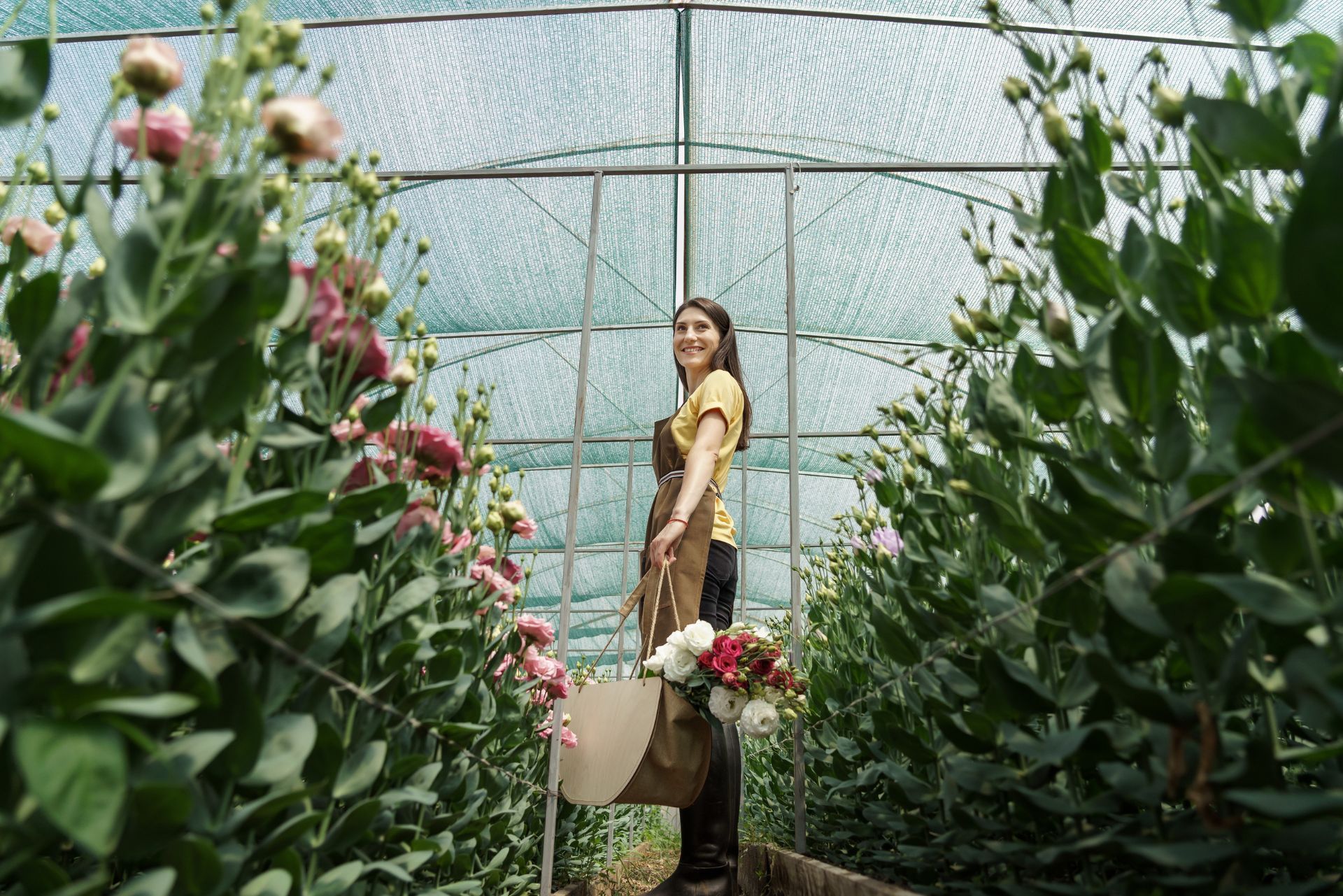
Top 3 Recommended Policies

Operating a greenhouse in Texas can be a rewarding venture, offering opportunities for both commercial and personal growth. However, like any business, it comes with its own set of risks and challenges. One of the most crucial aspects of managing a greenhouse is ensuring that it is adequately protected against potential losses. This is where greenhouse insurance comes into play. This comprehensive guide will explore everything you need to know about Texas greenhouse insurance, from coverage options to claims processes.
Understanding Greenhouse Insurance
Greenhouse insurance is designed to protect greenhouse owners from various risks associated with operating their facilities. This type of insurance can cover a wide range of incidents, including property damage, equipment failure, and liability claims. Understanding the specific needs of a greenhouse operation is essential for selecting the right insurance policy.
Types of Coverage
There are several types of coverage available under greenhouse insurance policies. Each type addresses different risks and can be tailored to the specific needs of the greenhouse operation.
- Property Insurance: This coverage protects the physical structure of the greenhouse, including the building, fixtures, and any attached equipment. It typically covers damage from fire, storms, vandalism, and other perils.
- Crop Insurance: Crop insurance is essential for greenhouse owners who grow plants for sale. This coverage helps protect against losses due to natural disasters, pests, or diseases that can affect crop yields.
- Liability Insurance: Liability insurance protects greenhouse owners from claims arising from accidents or injuries that occur on their property. This is particularly important if customers visit the greenhouse or if employees work on-site.
Why Greenhouse Insurance is Important
Having greenhouse insurance is not just a safety net; it is a vital component of running a successful greenhouse operation. Here are some reasons why it is essential:
- Financial Protection: In the event of a disaster or unforeseen incident, insurance can help cover the costs of repairs and replacements, preventing significant financial losses.
- Peace of Mind: Knowing that your greenhouse is insured allows owners to focus on growing their business without the constant worry of potential risks.
- Compliance and Credibility: Many suppliers and clients may require proof of insurance before engaging in business, making it a crucial aspect of maintaining credibility in the industry.
Additionally, greenhouse insurance can also provide coverage for business interruption, which is particularly relevant in the agricultural sector. If a greenhouse must halt operations due to a covered event, such as a fire or severe weather, this coverage can help compensate for lost income during the downtime. This aspect of insurance is vital for greenhouse owners who rely on consistent cash flow to manage their operations and pay employees.
Furthermore, as the agricultural landscape evolves with climate change and increasing pest resistance, greenhouse owners may find themselves facing new challenges. Insurance policies can often be adjusted to include endorsements or riders that address emerging risks, such as coverage for new technologies or sustainable practices being adopted in the industry. This adaptability ensures that greenhouse owners remain protected as they innovate and grow in a changing environment.

Factors Influencing Insurance Costs
The cost of greenhouse insurance can vary significantly based on several factors. Understanding these factors can help greenhouse owners make informed decisions when selecting their coverage.
Location
The geographical location of the greenhouse plays a significant role in determining insurance costs. Areas prone to natural disasters, such as hurricanes or floods, may have higher premiums due to the increased risk of damage. Additionally, urban locations may have different liability considerations compared to rural areas. For instance, urban greenhouses might face higher risks of vandalism or theft, prompting insurers to adjust their rates accordingly. Furthermore, local regulations and building codes can also affect premiums; greenhouses in regions with stringent safety requirements may incur additional costs to ensure compliance, which can be reflected in their insurance rates.
Size and Type of Greenhouse
The size and type of greenhouse also impact insurance rates. Larger greenhouses or those that grow high-value crops may require more extensive coverage, leading to higher premiums. Furthermore, specialized greenhouses, such as those that use advanced technology or grow rare plants, may have unique insurance needs. For example, greenhouses that employ hydroponics or aeroponics systems may need coverage for equipment breakdowns or crop failures due to system malfunctions. Additionally, the materials used in construction can influence costs; glass greenhouses may be more susceptible to breakage compared to those made of polycarbonate, prompting different insurance assessments and premiums.
Claims History
A greenhouse owner's claims history can influence insurance costs. If a business has a history of frequent claims, insurers may view it as a higher risk and charge higher premiums. Conversely, a clean claims history may lead to discounts or lower rates. Insurers often analyze not just the frequency of claims but also the severity and nature of past incidents. For instance, a greenhouse that has experienced significant losses due to pest infestations may be encouraged to implement better pest management strategies, which could potentially lower future premiums. Additionally, proactive measures such as regular maintenance checks and risk assessments can demonstrate to insurers that the owner is committed to minimizing risks, possibly resulting in more favorable insurance terms and pricing.
Selecting the Right Insurance Provider
Choosing the right insurance provider is crucial for ensuring adequate coverage and support. Here are some tips for selecting the best insurance provider for a greenhouse operation.
Research and Compare Options
Start by researching various insurance providers that specialize in agricultural or greenhouse insurance. Look for companies with a solid reputation and positive customer reviews. Comparing quotes and coverage options from multiple providers can help identify the best fit for specific needs. Additionally, consider seeking recommendations from fellow greenhouse operators or agricultural associations, as their firsthand experiences can provide valuable insights into the reliability and service quality of different insurers.
Check for Specialization
Some insurance companies specialize in agricultural insurance and may have more tailored policies for greenhouse operations. Look for providers that understand the unique risks associated with growing plants and operating a greenhouse. This specialization often translates into more comprehensive coverage options that address specific concerns, such as crop loss due to adverse weather conditions, pest infestations, or equipment breakdowns. Furthermore, specialized insurers may offer risk management resources and advice that can help mitigate potential losses.
Evaluate Customer Support
Good customer support is essential when dealing with insurance matters. Ensure that the provider offers accessible customer service, whether through phone, email, or online chat. A responsive support team can make a significant difference during the claims process or when seeking policy adjustments. It’s also beneficial to check if the provider has dedicated agents who understand the nuances of greenhouse insurance, as they can offer personalized guidance and support tailored to your specific operation. Additionally, consider the availability of online resources such as FAQs, policy documents, and educational materials that can empower you to make informed decisions about your coverage.
Understand Policy Details
Before finalizing your choice, take the time to thoroughly review the policy details. Understand what is covered and what is excluded, as well as any deductibles or limits on payouts. Pay attention to the terms regarding natural disasters, theft, and liability, as these can significantly impact your operation. Moreover, inquire about any optional add-ons or endorsements that could enhance your coverage, such as business interruption insurance or coverage for specialized equipment. Being well-informed about the specifics of your policy will help you avoid surprises when you need to file a claim.
Assess Financial Stability
Lastly, it’s important to assess the financial stability of the insurance provider. Look for ratings from independent agencies that evaluate the financial health of insurance companies, as this can give you confidence in their ability to pay claims when necessary. A financially stable insurer is more likely to be around in the long term, ensuring that your investment in coverage remains secure. By taking these factors into account, you can make a more informed decision and select an insurance provider that aligns with your greenhouse operation's needs and goals.
Common Exclusions in Greenhouse Insurance
While greenhouse insurance provides valuable protection, it is essential to be aware of common exclusions that may not be covered under standard policies. Understanding these exclusions can help greenhouse owners mitigate risks effectively.
Natural Disasters
Many insurance policies may exclude certain natural disasters, such as earthquakes or floods, unless specifically added as endorsements. Greenhouse owners should assess their location's risk factors and consider additional coverage options if necessary. For instance, regions prone to hurricanes might benefit from windstorm coverage, while areas with heavy rainfall may require flood insurance. Additionally, it’s prudent to stay informed about local climate patterns and historical data on natural disasters to make informed decisions about the necessary coverage.
Negligence
Insurance policies typically do not cover losses resulting from negligence or failure to maintain the greenhouse properly. Regular maintenance and adherence to safety protocols are crucial for ensuring coverage remains valid. This includes routine inspections of structural integrity, monitoring temperature and humidity levels, and ensuring that all equipment is functioning correctly. Greenhouse owners should also document maintenance activities to provide evidence of diligence should a claim arise, as this documentation can be vital in demonstrating that all reasonable precautions were taken to prevent loss.
Equipment Breakdown
While property insurance may cover physical damage to the greenhouse, equipment breakdown may not be included. Greenhouse owners should consider additional coverage for machinery and equipment to protect against unexpected failures. This can encompass everything from heating systems and irrigation pumps to climate control systems. Moreover, investing in regular maintenance contracts with equipment suppliers can not only prolong the life of the machinery but also provide peace of mind that any potential breakdowns will be addressed promptly, minimizing downtime and financial loss.
Understanding the Claims Process
Filing a claim can be a daunting process, but understanding the steps involved can make it more manageable. Here’s a breakdown of the typical claims process for greenhouse insurance.
Document the Damage
The first step in filing a claim is to document the damage thoroughly. Take photographs and make detailed notes about the incident, including the date, time, and circumstances surrounding the damage. This documentation will be crucial when presenting the claim to the insurance provider. It is also advisable to gather any relevant receipts for repairs or replacements that may be necessary. This can include invoices from contractors or suppliers, which will help substantiate the financial impact of the damage.
Notify the Insurance Provider
Once the damage is documented, the next step is to notify the insurance provider. Most companies have a specific timeframe within which claims must be reported, so prompt notification is essential. Provide all necessary information, including the documentation collected, to facilitate the claims process. In addition, be prepared to answer any questions the insurer may have about the incident or the condition of the greenhouse prior to the damage. Clear communication can help prevent misunderstandings and expedite the review of your claim.
Follow Up and Stay Informed
After submitting the claim, it is important to follow up with the insurance provider regularly. Staying informed about the status of the claim can help address any issues or additional information requests promptly. This proactive approach can lead to a smoother claims experience. Additionally, consider keeping a log of all communications with the insurance company, including dates, times, and the names of the representatives you speak with. This record can be invaluable if any disputes arise or if you need to escalate the claim due to delays or complications.
Understand Your Policy Coverage
Another essential aspect of the claims process is to have a clear understanding of your insurance policy coverage. Familiarize yourself with the specific terms, conditions, and exclusions outlined in your policy. Knowing what is covered can help you set realistic expectations for your claim and avoid surprises during the process. For instance, some policies may cover specific types of damage, such as fire or flooding, while excluding others. If you have any uncertainties about your coverage, don’t hesitate to reach out to your insurance agent for clarification.
Prepare for the Adjuster's Visit
In many cases, an insurance adjuster will need to assess the damage in person before a claim can be approved. Preparing for this visit is crucial; ensure that all areas of damage are accessible and that you have all relevant documentation on hand. It may also be beneficial to accompany the adjuster during their assessment, as you can provide context and answer any questions they may have. This interaction can help ensure that the adjuster has a comprehensive understanding of the situation, which can ultimately influence the outcome of your claim.

Tips for Reducing Insurance Costs
Increase Deductibles
One effective way to lower insurance premiums is to increase deductibles. A higher deductible means that the owner will pay more out-of-pocket in the event of a claim, but it can significantly reduce monthly premiums.
Implement Safety Measures
Investing in safety measures can lead to lower insurance costs. Installing security systems, fire alarms, and proper ventilation can reduce risks and may qualify for discounts on premiums. Regular maintenance of equipment and facilities also demonstrates a commitment to safety.
Bundle Policies
Many insurance providers offer discounts for bundling multiple policies. Greenhouse owners can save money by combining greenhouse insurance with other types of insurance, such as general liability or property insurance.
Conclusion
Texas greenhouse insurance is a vital component of protecting a greenhouse operation from potential risks. By understanding the types of coverage available, factors influencing costs, and the claims process, greenhouse owners can make informed decisions about their insurance needs. Implementing safety measures and exploring options to reduce costs can further enhance the financial stability of the operation.
Ultimately, investing in greenhouse insurance not only provides peace of mind but also safeguards the hard work and dedication that goes into running a successful greenhouse. Whether growing flowers, vegetables, or unique plants, having the right insurance coverage is essential for long-term success in the greenhouse industry.
Contact Us

